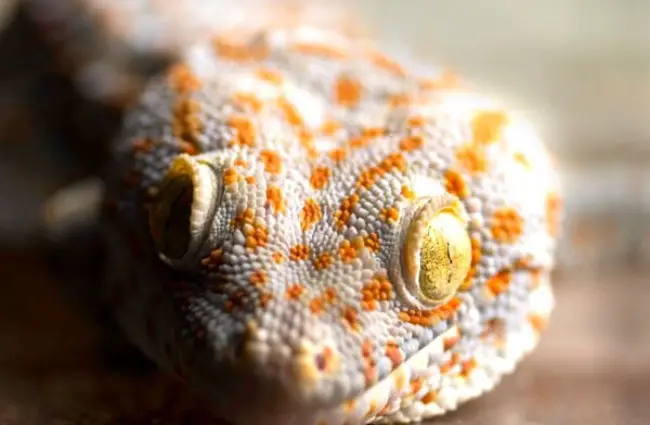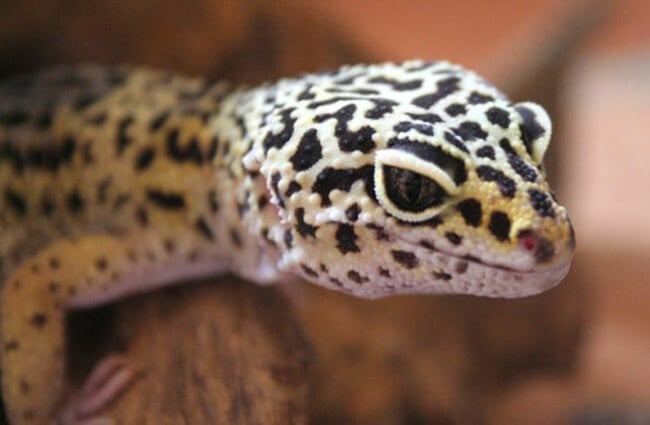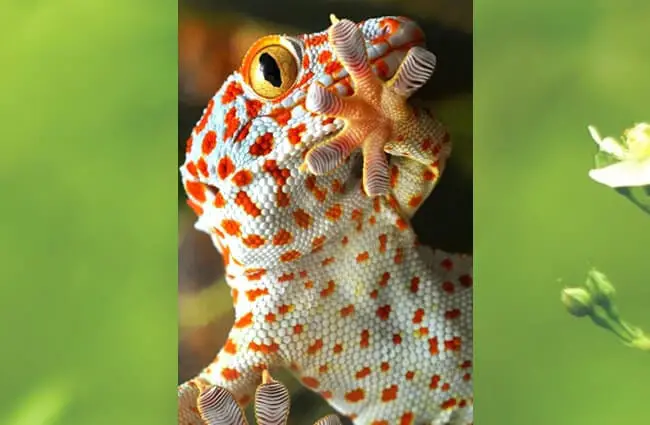The world of reptiles boasts incredible diversity, and among the most captivating is the Tokay Gecko. Renowned for its robust size, striking coloration, and distinctive vocalizations, this remarkable creature holds a unique place in both the natural world and human culture. This comprehensive guide delves into the life of the Tokay Gecko, exploring its habitat, behavior, evolution, and interactions with both the environment and people.

Understanding the Tokay Gecko
The Tokay Gecko, scientifically known as Gekko gecko, is one of the largest gecko species, capable of reaching lengths of up to 12 inches. These geckos are native to Southeast Asia, including Indonesia, the Philippines, Thailand, and parts of India. They are predominantly arboreal, spending most of their lives in trees, and are often found in rainforests, plantations, and even human dwellings.
Habitat and Distribution
Tokay Geckos thrive in warm, humid environments. They prefer forests with dense canopy cover, providing ample opportunities for hunting and shelter. They are incredibly adaptable and have successfully colonized areas modified by humans, such as agricultural lands and urban environments. Their broad distribution across Southeast Asia highlights their resilience and ability to exploit diverse habitats. They typically occupy tree hollows, crevices in rocks, and even the walls and roofs of buildings. Their presence can extend to elevations of up to 1,800 meters.

Physical Characteristics
Tokay Geckos are easily recognizable by their large size and striking coloration. Their base color ranges from gray to brownish, adorned with vibrant blue or reddish spots. The intensity and pattern of these spots vary depending on the individual and their geographical location. These spots are thought to play a role in camouflage and communication. They possess the characteristic toe pads of geckos, covered in microscopic hairs called setae, which enable them to adhere to virtually any surface. This allows them to climb trees, walls, and even ceilings with ease. A strong, prehensile tail assists in maintaining balance and grip during climbing.
Behavior and Diet
Tokay Geckos are primarily nocturnal hunters. They emerge at night to search for insects, small vertebrates, and other invertebrates. Their diet consists of crickets, grasshoppers, beetles, moths, and occasionally small lizards or frogs. They are ambush predators, patiently waiting for prey to come within striking distance. Once an unsuspecting insect ventures too close, the Tokay Gecko will swiftly capture it with its sticky tongue. These geckos are also known for their opportunistic feeding habits, scavenging on fallen fruits or other readily available food sources.
Vocalizations and Communication
The Tokay Gecko is renowned for its loud, distinctive vocalizations. Males produce a series of loud, “tokay” calls, hence the name. These calls are primarily used to attract females and establish territory. The vocalizations can be heard over considerable distances, particularly in the quiet of the night. They also use body language and scent marking to communicate with each other. Displays include head bobbing, tail waving, and dewlap extension, conveying information about social status and reproductive readiness.

Reproduction and Life Cycle
Tokay Geckos typically reach sexual maturity around one to two years of age. They are oviparous, meaning they reproduce by laying eggs. The breeding season varies depending on geographical location, but generally occurs during the warmer months. Males engage in courtship displays to attract females, often involving vocalizations and elaborate movements. After mating, the female lays a clutch of two to four eggs in a protected location, such as a tree hollow or crevice. The eggs are leathery and require a period of incubation lasting approximately 60 to 90 days. Upon hatching, the young geckos are miniature versions of their parents and are immediately independent, capable of hunting and defending themselves.
Evolutionary History
The evolutionary history of the Tokay Gecko is rooted in the broader history of the Gekkonidae family, which originated in Asia millions of years ago. The Tokay Gecko specifically is believed to have diverged from other gecko lineages relatively recently, adapting to its niche within the Southeast Asian rainforests. The development of its large size and distinctive coloration are likely adaptations to its arboreal lifestyle and the need to attract mates. Genetic studies are ongoing to further unravel the precise evolutionary relationships within the Gekkonidae family and understand the factors that drove the evolution of the Tokay Gecko.

Ecological Role and Interactions
Tokay Geckos play an important role in their ecosystems as insectivores. By consuming large numbers of insects, they help regulate insect populations and maintain ecological balance. They also serve as prey for larger predators, such as snakes, birds of prey, and mammals. These geckos interact with other species through competition for resources, such as food and shelter. They can also exhibit symbiotic relationships with certain plants and insects. For instance, they may disperse seeds or pollinate flowers while foraging for food.
Tokay Geckos and Humans
Tokay Geckos have a long history of interaction with humans. In some cultures, they are considered symbols of good luck and prosperity. They are sometimes kept as pets, though their care requirements can be demanding. Sadly, they are also targeted for traditional medicine practices, leading to population declines in certain areas. Habitat loss and degradation pose significant threats to their survival. Conservation efforts are crucial to protect these magnificent creatures and ensure their continued presence in the wild.
Encountering a Tokay Gecko in the Wild
If you encounter a Tokay Gecko in its natural habitat, observe it from a respectful distance. Avoid disturbing its environment or attempting to handle it. These geckos are generally harmless to humans, but they may bite if threatened. Do not attempt to capture or remove the gecko from its habitat, as this could disrupt its natural behavior and contribute to population declines. Appreciate these animals as a unique and integral part of the ecosystem.

Caring for Tokay Geckos in Captivity
For zookeepers and experienced reptile keepers, providing appropriate care for Tokay Geckos requires specialized knowledge and dedication. They require a spacious enclosure that mimics their natural arboreal habitat, with plenty of climbing branches, hiding places, and a temperature gradient. Humidity levels must be maintained within a specific range to prevent shedding problems. Their diet should consist of a variety of insects, supplemented with vitamins and minerals. Regular veterinary checkups are essential to monitor their health and address any potential issues. Avoid overcrowding, as this can lead to stress and disease. Enrichment activities, such as providing novel climbing structures or foraging opportunities, can enhance their well-being.
Fascinating Facts about Tokay Geckos
- Tokay Geckos can regenerate their tails if they are lost, though the regenerated tail may differ in appearance from the original.
- They have exceptional eyesight, allowing them to navigate and hunt effectively in low-light conditions.
- Their vocalizations can vary in pitch and intensity, conveying different messages.
- They are known to exhibit territorial behavior, defending their home range from intruders.
- Tokay Geckos can live for up to 20 years in captivity with proper care.

The Tokay Gecko stands as a testament to the remarkable biodiversity of our planet. From its striking appearance to its fascinating behaviors, this reptile captivates and inspires. By understanding and appreciating these magnificent creatures, we can work to ensure their survival for generations to come.

![Red Angus Closeup of a beautiful Red Angus cowPhoto by: U.S. Department of Agriculture [pubic domain]https://creativecommons.org/licenses/by/2.0/](https://animals.net/wp-content/uploads/2020/03/Red-Angus-4-238x178.jpg)




![Red Angus Closeup of a beautiful Red Angus cowPhoto by: U.S. Department of Agriculture [pubic domain]https://creativecommons.org/licenses/by/2.0/](https://animals.net/wp-content/uploads/2020/03/Red-Angus-4-100x75.jpg)

